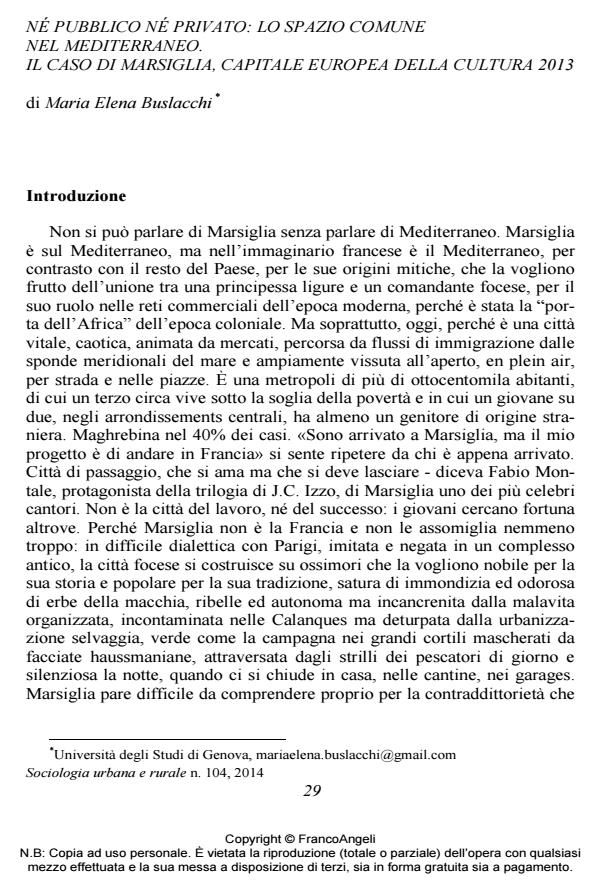Neither Public nor Private: Common Space around the Mediterranean Sea. The Casestudy of Marseille, European Capital of Culture 2013,
Journal title SOCIOLOGIA URBANA E RURALE
Author/s Maria Elena Buslacchi
Publishing Year 2014 Issue 2014/104
Language Italian Pages 15 P. 29-43 File size 255 KB
DOI 10.3280/SUR2014-104003
DOI is like a bar code for intellectual property: to have more infomation
click here
Below, you can see the article first page
If you want to buy this article in PDF format, you can do it, following the instructions to buy download credits

FrancoAngeli is member of Publishers International Linking Association, Inc (PILA), a not-for-profit association which run the CrossRef service enabling links to and from online scholarly content.
This paper is the result of a study lead on Marseille during the European Culture Capital 2013. While tracing a typology of the several kinds of space investment in relation with events - from abstention to the most active involving, as adhesion and as criticism - the author underlines the specific features of the unregulated use of space, looking for the possibility to define the category of an hybrid type of space, neither "public" nor "private", eventually defined as "common".
Keywords: Public Space, Common Space, European Capitals of Culture, Marseille, Mediterranean Sea, Protests
Maria Elena Buslacchi, Né pubblico né privato: lo spazio comune nel mediterraneo. Il caso di marsiglia, capitale europea della cultura 2013 in "SOCIOLOGIA URBANA E RURALE" 104/2014, pp 29-43, DOI: 10.3280/SUR2014-104003